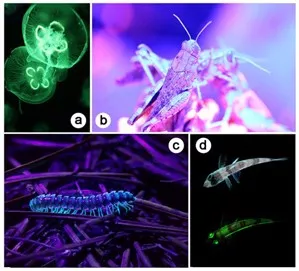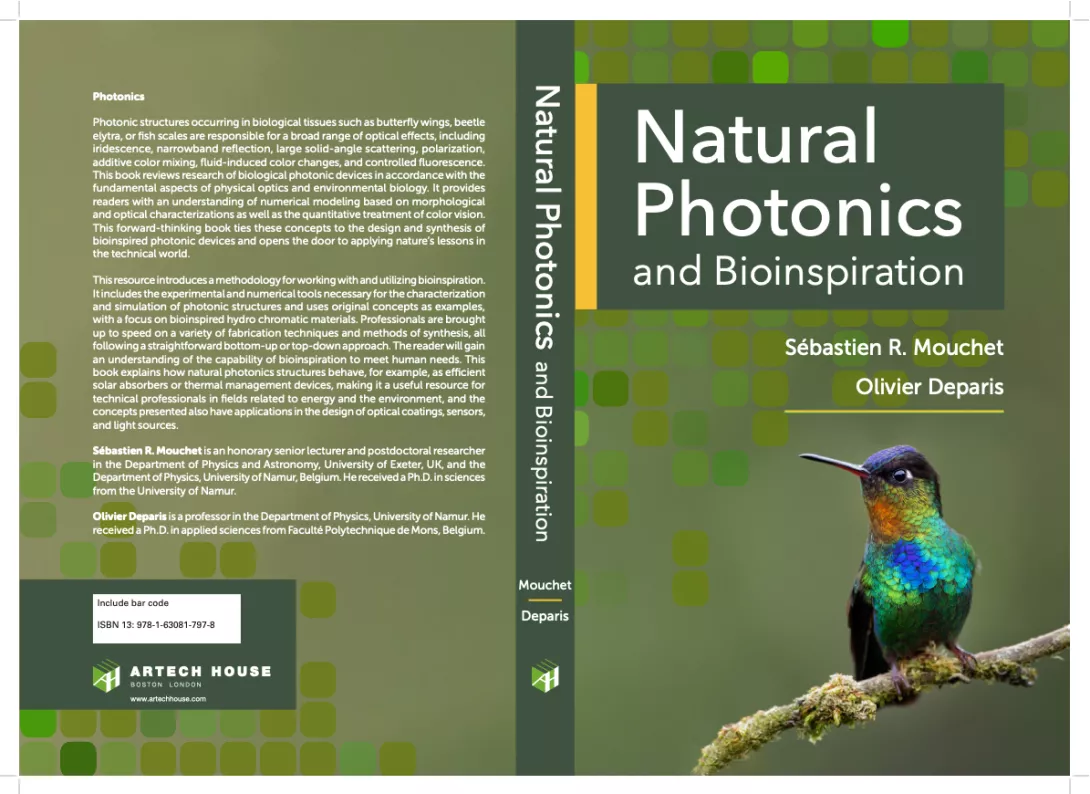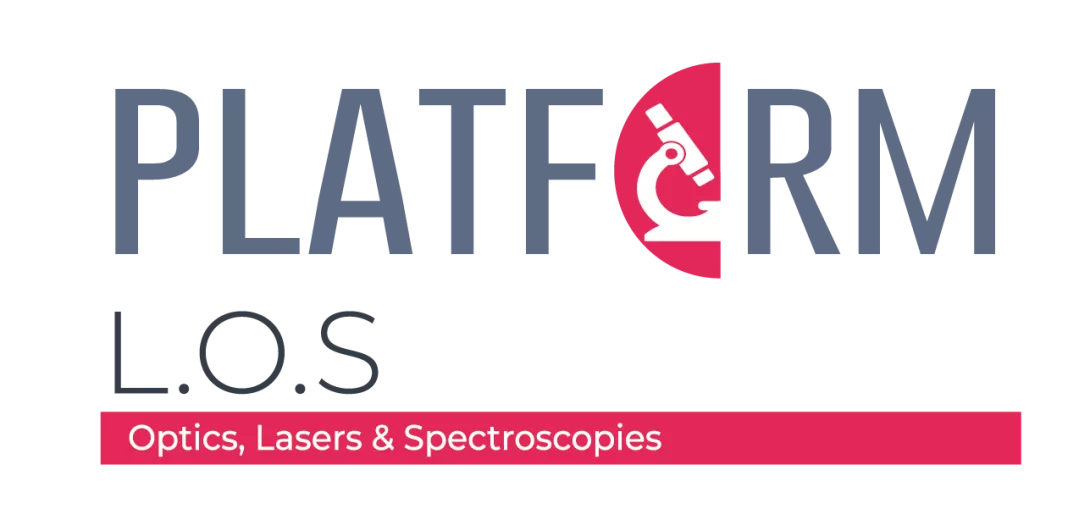In the natural world, many animal species exhibit fluorescence, namely emitting visible light under ultraviolet light. However, the physical, chemical, or biological properties of fluorescence in these species are not well understood. For instance, until this year, the fluorescence of the transparent wings of over 3000 species of cicadas had not been reported in the scientific literature.

Figure 1. Fluorescence occurs in many natural organisms. For example, some species of jellyfish (a), grasshoppers (b), millipedes (c) and fish (d) are known to fluoresce under UV light. Images reproduced from pixabay.com. From Mara et al, Revealing the Wonder of Natural Photonics by Nonlinear Optics, Biomimetics, 7(4), 2022.
In a new study published in February 2023 in the Journal of Luminescence, an international group of scientists led by Sébastien Mouchet, a researcher at the Department of physics and member of the Namur Institute of Structured Matter (NISM) and the Institute of Life, Earth and Environment (ILEE), has uncovered the unknown fluorescence properties of transparent wings of certain insects, such as cicadas found in the south of France, and the broad-bordered bee hawk-moth, a lepidopteran that inhabits Belgium, among other places.
This study reports that light emission through fluorescence is more common in the transparent wings of insects than previously believed. There is every reason to think that the origin of this fluorescence arises from the presence of resilin in the wings. This protein is known to contribute to the flexibility of the wings.
Contrary to previous beliefs, the fluorescence emission observed in these insects may be an accidental consequence of the presence of resilin in the wings for mechanical purposes, rather than play any particular role in the insect's visual communication, whether for courtship or territorial defence.
The fundamental study of fluorescence in living organisms is not only crucial from a zoological point of view. The discovery of the green fluorescent protein (known as GFP) in the tissues of a jellyfish species has technologically revolutionized the world of genetics and fluorescence microscopy. The Nobel Prize in Chemistry in 2008 was awarded for this discovery.
The expertise of the LOS technology platform
At the UNamur, the equipment of the LOS (Lasers, Optics and Spectroscopies) technological platform played a crucial role in this study.
The platform offers unparalleled expertise in the characterisation of optical and electronic properties of matter through linear and non-linear optical measurements, carried out using primarily lasers in the context of fundamental or applied research. With the capability to analyze systems structured in one, two or three dimensions at nanoscale, molecular films at interfaces and gas traces, the platform provides cutting-edge experimental skills. Furthermore, the platform also develops analytical and numerical models to interpret the measured spectroscopic responses.
The team of researchers
- Sébastien Mouchet, Louis Dellieu and Olivier Deparis (University of Namur, Belgium)
- Charlotte Verstraete, Dimitrije Mara and Thierry Verbiest (KU Leuven, Belgium)
- Bojana Bokic and Branko Kolaric (University of Belgrade, Serbia)
- Albert Orr (Griffith University, Australia)
- Rik Van Deun (Ghent University, Belgium)
- Pete Vukusic (University of Exeter, UK)
Fluorescence and some of its applications
Fluorescence is a fascinating property with numerous practical applications in our daily lives:
- High visibility clothing and aesthetic products often use this property to create a distinctive look.
- Highlighters to mark attention to sections of a text.
- Collision avoidance paints that are used in aircraft.
Moreover, fluorescence is also used with so-called "black light" source, near ultraviolet light source to make white and fluorescent objects stand out. This effect is used to create a unique atmosphere, to verify the authenticity of banknotes, and to detect certain invisible substances such as body fluids on a crime scene.
Fluorescence is also a commonly used tool in leak detection. It involves mixing fluorescent tracers with water, which enables the detection of any infiltration or passage of water. TRAQUA, a UNamur spin-off, specializes in hydrological monitoring and has developed the STREAM® fluorometer/turbidimeter, which is an excellent example of a fluorescent application.

Drawing inspiration from nature to innovate
Prof. Olivier Deparis and Dr Sébastien Mouchet have published a book on the theme of physical optics and environmental biology. On the path of Jean-Pol Vigneron’s research, this “avant-garde” book according to Artech House, opens the door to bioinspired applications in the fields of optics, energy and the environment.
Read our previous article "Drawing inspiration from nature to innovate"

